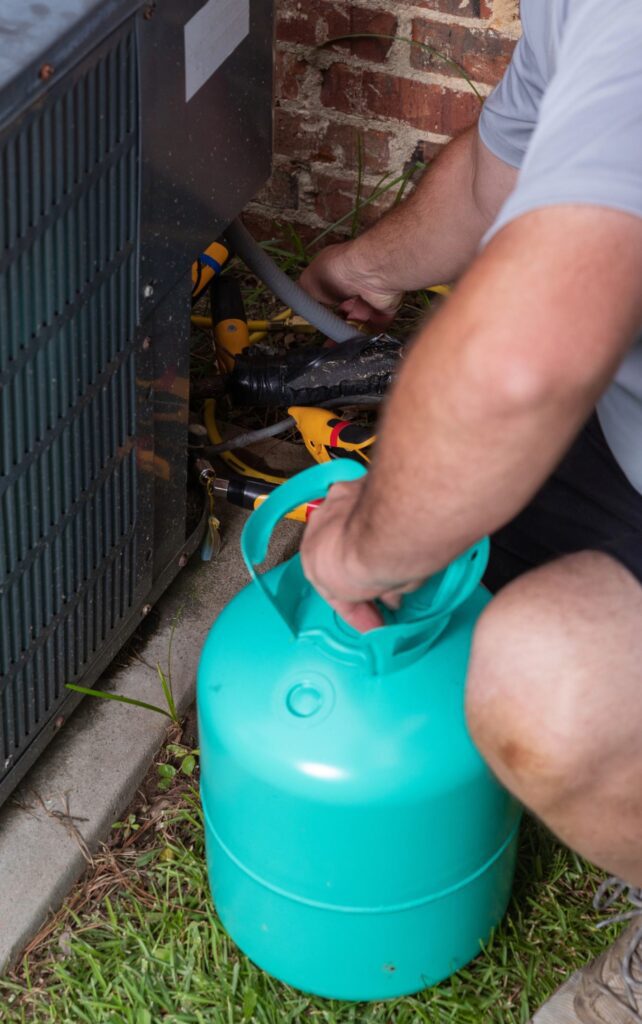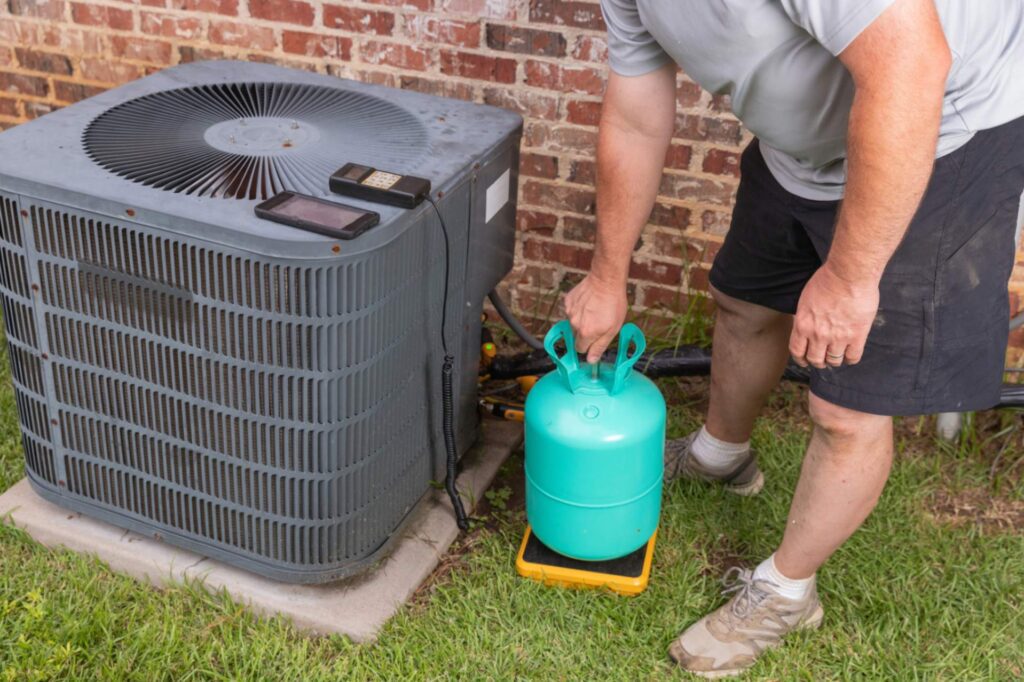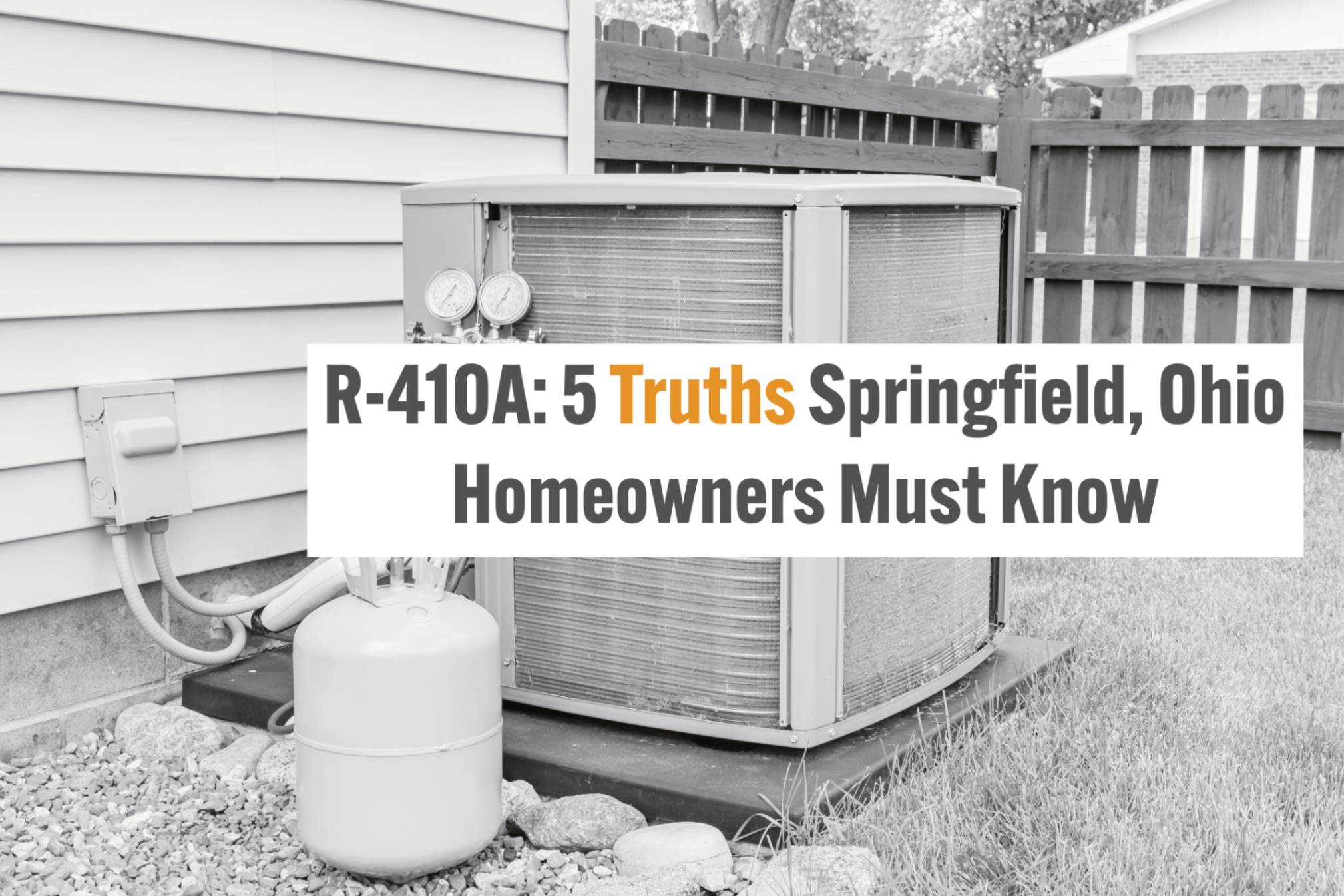In the HVAC industry, R-410A refrigerant has long been a staple for homeowners everywhere. However, as regulations evolve and the 2025 phase-out looms, understanding what this means for our local homeowners in Springfield, Ohio, is pretty important.
Because R-410A has been one of the prominent refrigerants used over the past years, recent developments in environmental regulations have brought into question its place in the future, raising concerns about its potential phase-out. Today, this article dives straight into the reasons behind the possible phase-out of R-410A and explores its impact on the HVAC industry, along with the emerging alternatives.

1. Understanding R-410A Refrigerant
To understand the implications of R-410A’s potential phase-out, it’s essential to first understand its characteristics. R-410A is a hydrofluorocarbon (HFC) widely used in both residential and commercial air conditioning systems. Originally introduced as an environmentally friendlier alternative to R-22, which was known for its ozone-depleting effects, R-410A gained popularity for its excellent cooling efficiency and reliability.
Unlike its predecessors such as chlorofluorocarbons (CFCs) and hydrochlorofluorocarbons (HCFCs), R-410A does not pose a risk to the ozone layer. However, it does have a high global warming potential (GWP), leading to concerns regarding its environmental impact.
2. Pushing for Environmental Sustainability
The potential phase-out of R-410A is part of a global effort to reduce greenhouse gas emissions and tackle climate change. The Kigali Amendment to the Montreal Protocol, an international treaty supported by numerous countries, seeks to cut down the production and consumption of HFCs, including R-410A, by over 80% in the coming decades. This highlights the necessity for HVAC manufacturers to switch to refrigerants that have a lower GWP.
In the United States, the Environmental Protection Agency (EPA) has implemented the American Innovation and Manufacturing (AIM) Act, which focuses on the reduction of HFCs. These regulatory changes are urging the industry to adopt more sustainable alternatives.
3. Will R-410A Face a Phase-Out by 2025?
The timeline for phasing down HFCs like R-410A can vary depending on local regulations. Nevertheless, significant reductions in R-410A usage are anticipated around 2025 as part of the Kigali Amendment and the EPA’s AIM Act.
While a worldwide phase-out may not happen by 2025, restrictions on new HVAC systems using R-410A are expected to increase. Manufacturers are likely to halt the production of new units reliant on R-410A and focus on developing equipment compatible with next-generation, low-GWP refrigerants.
4. Impacts of the R-410A Phase-out on the HVAC Industry
The likely phase-out of R-410A will have considerable implications for the HVAC sector. Here are crucial areas to consider:
- Transition to New Refrigerants: Manufacturers and service providers must gear up for a shift to more eco-friendly refrigerants. Options like R-32, R-454B (Opteon™ XL41), and R-466A (Solstice® N41) are becoming increasingly popular due to their lower GWP. Industry professionals need to familiarize themselves with these alternatives to offer efficient solutions to clients.
- Training and Certification: The introduction of new refrigerants necessitates proper training and certification. HVAC technicians will need updated skills to handle and manage these new refrigerants safely while complying with upcoming environmental regulations.
- Retrofitting and Upgrades: Existing HVAC systems using R-410A may have retrofit options to accommodate newer refrigerants, although this can be costly and complex. In many cases, it may be more practical for consumers to replace old systems with new, energy-efficient models designed for low-GWP refrigerants.
- Cost and Availability: Transitioning to new refrigerants could affect the cost and supply of HVAC systems and components. As demand for new refrigerants and equipment grows, manufacturers will need to increase production to satisfy market demands. Consumers might face higher expenses initially due to the adoption of new technology and limited availability, though prices are projected to stabilize eventually.
5. Looking Ahead and Preparing for the R-410A Phase-out
As the HVAC industry evolves, stakeholders need to be proactive and well-informed. Here are steps to prepare for the changing landscape:
- Stay informed about regulatory updates and refrigerant phase-down timelines.
- Hire an HVAC company that will inform you and keep you up to date on the transition and current regulations.
- Consider environmental impacts when evaluating options for businesses and households.
At Springfield Heating & Cooling, we are committed to navigating these changes and assisting our clients in making informed decisions for a sustainable future.

Whether it’s a simple refrigerant recharge or full HVAC upgrade, Springfield Heating & Air Conditioning has you covered. Our certified team provides fast, expert service you can trust. Call today, and we’ll make sure all your AC maintenance needs are taken care of!
Call Springfield Heating & Cooling today at (937) 350-1881, or schedule an appointment online now by clicking here!
More HVAC Refrigerant Information
Our goal is always to keep you informed as best as we can. Learn more about the role of HVAC refrigerants and their role here!





